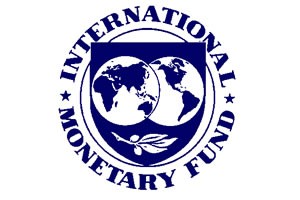


ArmInfo. 2017 Armenia will complete with an economic growth rate exceeding 4%, and in 2018 - GDP growth rates will somewhat decrease. the newly appointed permanent representative of the IMF in Armenia Julia Ustyugova on November 27 expressed opinion on the sidelines of the event timed to the IMF's "Decisive Action" report in the Caucasus and Central Asia.
"Overall, the year 2017 was good for Armenia, especially compared to 2016, when there was practically no growth. The growth of economic activity in 2017 was mainly due to the growth in the sphere of industry, trade and services. In 2018, economic growth rates may drop slightly to more moderate rates," she said, stressing that the growth benchmark in 2018 will depend on the final annual indicators of the current year.
Speaking about the state debt, Y. Ustyugova noted, first of all, the devaluation of the national currency, and secondly, a countercyclical fiscal policy that supported economic growth in difficult times. Now, according to her, the dynamics of public debt, according to IMF estimates, is stable. But at the same time, it is extremely necessary to maintain fiscal discipline and ensure rationality of expenditures with an emphasis on capital costs that can support growth not only in the upcoming 2018, but also in the medium term. "Within the framework of this issue, the IMF works closely with the authorities, considering the possibility of amending the fiscal rules," she said. In this regard, Ustyugova recalled the support for fiscal rules provided to the RA Ministry of Finance in June this year. The expert noted that the corrective mechanisms built into the current fiscal rules of Armenia are too strict, and they can rather destabilize the situation in the economy rather than adjust. "Our position is that fiscal rules should be reliable, but flexible, and corrective mechanisms should provide for circumstances in which a temporary deviation is acceptable. Such circumstances may be external or internal shocks, which are beyond the control of the authorities. In this regard, she noted the natural disasters and the aggravation of the situation on the border.
At the same time, Ustyugova noted that the IMF will continue to work with Armenia fairly tightly. "Our program with Armenia ended in June 2017. But if there is a need for an additional program, we will consider this possibility at the request of the Armenian authorities."
In October 2017, the IMF predicted GDP growth in Armenia in 2017 by 3.5%, with a slowdown in 2018 to 2.9%, against the actual growth of 0.2% in 2016. According to the World Bank forecast, the GDP growth in Armenia is expected to be 2.7% in 2017, with an acceleration of the rate in 2018 to 3.1%, in 2019 - up to 3.4%. According to the forecast of the EDB in 2017, the GDP of Armenia is expected to grow by 2.9%, the Asian Development Bank - by 2.2%. Fitch improved the forecast for GDP growth in Armenia in 2017 from the previous 2.1% to the current 3.4% with acceleration to 3.6% in 2018. The state budget of Armenia for 2017 laid the GDP growth by 3.2%, but the government voiced a 5% growth. According to the updated forecast of the Central Bank, Armenia's GDP growth in 2017 will be 3.9-4.8%. According to the National Statistical Service of Armenia, Armenia's GDP growth slowed to 0.2% in 2016 from 3.2% in 2015, and in Jan-Aug 2017 - 5.5% per annum (against 2.4% in the same period in 2016).